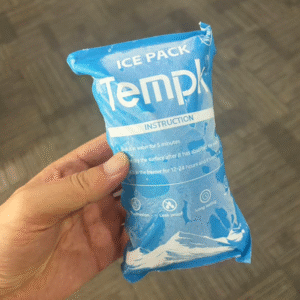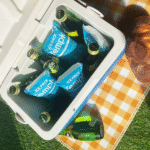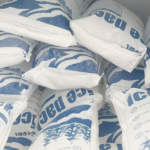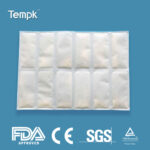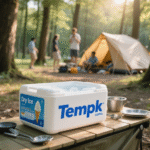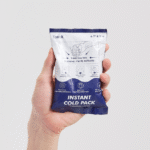How Does Cold Chain Food Storage Keep You Safe?
Food safety is about more than cooking—it starts with how you store and move perishable foods. في 2025 the global food cold chain market is worth roughly USD 70.55 مليار, and it’s projected to reach USD 121.77 مليار من قبل 2030. Yet around 30 % of food produced for human consumption is lost or wasted. New regulations such as the Food Safety Modernization Act (FSMA) 204 require high risk foods to be fully traceable by January 2026. To protect your family and your business, فهم cold chain food storage—how to keep foods cold from farm to fork—is essential. This guide breaks down the temperature zones, التقنيات, and trends you need to know.
What temperature zones do different foods require? Learn the difference between deep freeze, المجمدة, chilled and cool chain storage and how they affect food quality.
How do you design and manage an efficient cold chain food storage system? Follow step by step guidance on risk assessment, التغليف, storage design, route planning and contingency planning.
Which technologies empower cold chain food storage? اكتشف أجهزة استشعار إنترنت الأشياء, RFID, نظام تحديد المواقع, blockchain and AI—tools that provide real time visibility and regulatory compliance.
What trends will shape cold chain food storage in 2025? Understand sustainability initiatives such as the Move to –15 °C coalition, اللوجستية الخضراء, AI driven automation and regulatory changes.
How can you reduce food waste and meet new regulations? Discover actionable tips and see how companies integrate technology to cut spoilage and comply with FSMA 204.
What Temperature Zones Should Different Foods Be Stored At?
إجابة مباشرة
Different foods have distinct temperature requirements, and staying within these zones is critical for safety and quality. Deep freeze products like seafood exports and premium meats need –28 °C to –30 °C, frozen foods require –16 °C to –20 °C, chilled products stay at 0 درجة مئوية إلى 4 درجة مئوية, cool chain items such as chocolates and cut flowers are kept between 8 درجة مئوية و 15 درجة مئوية, and controlled room items like shelf stable foods are held at 15 درجة مئوية إلى 25 درجة مئوية. When foods enter the “temperature danger zone” (40 درجة فهرنهايت إلى 140 °F for consumers, 41 درجة فهرنهايت إلى 135 °F for commercial operations), bacteria can double every 20 دقائق. Perishable foods should never be kept in this zone for more than two hours.
شرح موسع
Think of temperature zones like lanes on a highway—each lane is designed for a specific speed. Deep freeze storage keeps products solidly frozen to prevent protein degradation; frozen storage ensures long shelf life for meats, vegetables and ready meals. Chilled storage at 0–4 °C slows bacterial growth without freezing fresh meat, ألبان, الفاكهة والخضروات, maintaining their texture and nutrients. Cool chain storage prevents condensation for processed foods and chocolates, while controlled room environments keep shelf stable foods from melting or condensing. Staying within these zones matters because bacteria such as Salmonella and E. coli multiply rapidly when temperatures rise above 4 درجة مئوية, with counts doubling every 20 دقائق. The USDA defines the consumer temperature danger zone as 40 درجة فهرنهايت – 140 درجة فهرنهايت, whereas the FDA uses 41 °F–135 °F. Following these ranges helps you avoid costly recalls and protect consumers.
Understanding the Temperature Danger Zone for Perishable Foods
Food safety experts refer to “time/temperature control for safety” (TCS) foods—items that support rapid bacterial growth and require time and temperature control. Examples include milk and dairy products, بيض, لحمة, دواجن, سمكة, baked potatoes, tofu, cut fruits and vegetables, cooked rice and beans. To keep these foods safe, avoid the danger zone by:
| فئة درجة الحرارة | يتراوح | Typical Foods | دلالة |
| تجميد عميق | –28 °C to –30 °C | صادرات المأكولات البحرية, اللحوم الممتازة | Keeps products fully frozen for international transport; prevents protein degradation |
| المجمدة | –16 °C to –20 °C | Meat cuts, الخضار المجمدة, ready meals | Ensures long shelf life and maintains nutrition |
| برد | 0 درجة مئوية إلى 4 درجة مئوية | اللحوم الطازجة, ألبان, الفاكهة, خضروات | Maintains freshness and slows bacterial growth |
| Cool chain | 8 درجة مئوية إلى 15 درجة مئوية | Processed foods, الشوكولاتة, قطع الزهور | Prevents condensation and moisture damage |
| غرفة تسيطر عليها | 15 درجة مئوية إلى 25 درجة مئوية | Shelf stable foods, المشروبات | Avoids melting or condensation; sometimes called ambient control |
نصائح ونصيحة عملية
Calibrate equipment regularly: Verify refrigerator, freezer and sensor accuracy every three months; place a digital data logger in the middle of your container to record actual product temperature.
Plan packaging by food type: Use gel packs or phase change materials for chilled goods and dry ice or eutectic plates for frozen shipments.
Manage humidity and airflow: High humidity prevents dehydration of leafy greens, while good airflow reduces condensation and cross contamination.
Train staff in hygiene and handling: Minimise door openings, follow first in first out rotation, and document corrective actions for any temperature excursion.
حالة حقيقية: A logistics company equipped each shipment with IoT sensors integrated into its transportation management system. The sensors transmitted real time temperature and location data, and staff received instant alerts if the temperature deviated. This system reduced spoilage by 15 % and maintained customer trust.
How to Design and Manage an Efficient Cold Chain Food Storage System?
إجابة مباشرة
An efficient cold chain food storage system involves careful planning, appropriate packaging, validated storage infrastructure, precise route planning, continuous monitoring and contingency planning. Start with a risk assessment of your products and identify potential hazards such as long transit times or equipment failure. Choose packaging based on product temperature needs—gel packs for chilled goods, phase change materials for high value seafood, الثلج الجاف للأشياء المجمدة, vacuum insulated panels for vaccines and premium seafood, and active refrigerated containers for long journeys. Design facilities with separate zones for chilled, frozen and ambient goods, using energy efficient equipment and renewable energy sources. Plan routes using traffic and weather data, and partner with carriers that offer validated temperature controlled vehicles. Implement IoT sensors and digital data loggers for continuous monitoring. Train staff on handling procedures and prepare backup plans—such as generators and spare sensors—so you can respond quickly to any temperature excursion.
شرح موسع
Building a resilient cold chain resembles constructing a layered safety net. You begin by mapping your product portfolio: identify the perishables you handle, their required temperature ranges, shelf life and the risks involved (على سبيل المثال, cross border delays or power failures). Packaging choices should match the journey. Gel packs and insulated boxes offer affordable cold for fresh produce; phase change materials maintain stable temperatures without dry ice for high value seafood. Dry ice remains the workhorse for frozen meats and ice cream because it keeps goods below –18 °C and leaves no residue. Vacuum insulated panels and thermal blankets provide superior thermal performance for vaccines and premium seafood. Active refrigerated containers deliver precise cooling for multi day or international shipments, at a higher cost but with greater reliability. Inside your warehouse, allocate separate zones for chilled, frozen and ambient products, use racking systems for airflow and maintain relative humidity around 85–95 % for fruits and vegetables. Energy efficient refrigeration units and renewable power sources like solar panels or hydrogen powered forklifts reduce operating costs and greenhouse gas emissions. Route planning software that considers traffic, weather and priority can reduce fuel consumption and delivery times. أخيراً, integrate sensors into your transportation management system and train staff to interpret alerts and take corrective actions. Regularly review data logs, delivery times and incidents to improve your process.
Efficient Packaging and Storage Solutions
| حل التعبئة والتغليف | وصف | Suitable Foods | فوائد |
| حزم هلام / طوب الجليد | Reusable packs filled with water or gel that freeze solid | Chilled dairy, ينتج, لحمة | Provide consistent cold; economical and easy to handle |
| مواد تغيير المرحلة (PCMS) | Materials engineered to maintain specific temperatures (على سبيل المثال, 0 درجة مئوية أو -20 درجة مئوية) by absorbing or releasing heat during phase transitions | Ready meals, high value seafood | Maintain precise temperatures without dry ice; reduce shipping weight; reusable and eco friendly |
| الجليد الجاف | Solid carbon dioxide at –78.5 °C that sublimates into gas | اللحوم المجمدة, بوظة, اللقاحات | Keeps goods below –18 °C for extended periods; leaves no residue |
| ألواح معزولة بالفراغ (كبار الشخصيات) | High performance insulation panels used in passive or active systems | لقاحات مرنا, المأكولات البحرية المتميزة | Offer superior thermal performance and reduce weight; often used with PCMs or cryogenic gases |
| Thermal pallet covers and blankets | Insulated covers placed over pallets | ينتج, ألبان, المشروبات | Shield against temperature spikes and radiant heat during loading and unloading |
| Active refrigerated containers | Containers with built in refrigeration units powered by batteries or external sources | Long haul shipments of meat, المأكولات البحرية, ينتج | Maintain precise temperatures regardless of ambient conditions; suitable for multi day or international transport |
Tips for Managing Your System
Start with a pilot project: Test sensors and digital monitoring on a small fraction of shipments before scaling.
دمج تدفقات البيانات: Connect IoT sensors, أنظمة إدارة النقل, enterprise resource planning and warehouse management for unified visibility.
Train and empower staff: Provide training on using mobile apps, interpreting alerts and responding to temperature deviations; encourage data driven decision making.
Plan for cybersecurity: Protect data by encrypting communications, updating firmware and using secure networks; blockchain can help by making temperature records tamper proof.
Monitor return on investment: Track benefits such as reduced spoilage, lower energy costs and improved compliance to justify continued investment.
حالة حقيقية: After integrating sensors with its transportation management system, a logistics provider could monitor each shipment’s temperature and location in real time. When an excursion occurred, the system alerted staff, who took immediate action. This integration reduced product loss by 15 % and boosted customer confidence.
Which Technologies and Packaging Solutions Empower Cold Chain Food Storage?
إجابة مباشرة
Modern cold chain food storage relies on a suite of technologies—IoT sensors, علامات RFID, أجهزة تعقب GPS, blockchain platforms, AI and robotics—that provide end to end visibility, traceability and efficiency. تقوم أجهزة استشعار إنترنت الأشياء بتسجيل درجة الحرارة, الرطوبة والصدمة, transmitting real time data to cloud dashboards. RFID tags automatically log when shipments pass through checkpoints, while GPS trackers provide location data. Blockchain technology stores temperature and custody events in an unchangeable record for audits and recall management. AI and predictive analytics analyse historical and real time data to forecast equipment failures, optimize routes and anticipate demand. Robotics and automated guided vehicles improve picking, packing and sorting in cold storage facilities, reducing labour costs and errors. Sustainable packaging solutions—such as vacuum insulated panels and phase change materials—help maintain precise temperatures while minimising environmental impact.
شرح موسع
Technology acts as the nervous system of the cold chain. Data loggers and IoT sensors placed in each package or pallet record temperature, الرطوبة والصدمة; telemetry devices transmit these metrics to cloud dashboards. According to the Global Cold Chain Alliance, زيادة 70 % of food exporters in North America and Europe now use digital monitoring solutions to meet compliance standards. RFID tags automate inventory tracking and integrate with enterprise systems for accurate stock management. GPS trackers enable route optimisation and proof of delivery. Blockchain platforms provide a tamper proof ledger for temperature and custody data, enhancing traceability and simplifying audits. AI predictive analytics can forecast equipment failures, optimize routes and anticipate demand, reducing downtime and improving service reliability. Automated warehouse systems—robots, conveyors and smart forklifts—improve picking speed and reduce labour costs. Renewable energy solutions such as solar powered refrigeration, electric trucks and hydrogen fuelled forklifts reduce carbon footprints and improve resilience.
منظمة العفو الدولية, Blockchain and IoT: Transforming Cold Chain Food Storage
| تكنولوجيا | وصف | فائدة |
| مسجلات بيانات إنترنت الأشياء | Devices that record and transmit temperature and humidity data | Provide real time alerts; satisfy regulatory requirements; تقليل التلف |
| علامات RFID | Passive or active tags attached to pallets or cartons | Automate inventory tracking; integrate with enterprise systems for accurate stock management |
| أجهزة تعقب GPS | Satellite or cellular devices that provide location data | Enable route optimisation and proof of delivery; reduce theft and loss |
| منصات البلوكشين | Shared ledgers recording temperature and custody events | التأكد من سلامة البيانات; enhance traceability; simplify audits and recalls |
| AI predictive analytics | Algorithms that analyse sensor data, weather and traffic | Forecast equipment failures; optimise routes; anticipate demand and adjust inventory |
| Automated warehouse systems | الروبوتات, conveyors and smart forklifts used in cold storage | Increase picking speed; reduce labour costs; minimise errors and accidents |
نصائح ونصيحة عملية
ابدأ صغيرًا: Begin with a pilot project that deploys sensors on a subset of shipments.
دمج الأنظمة: Connect sensors to your transportation management system, enterprise resource planning and warehouse management platforms for unified visibility.
تدريب الموظفين: Educate employees on using mobile apps, interpreting alerts and taking corrective actions.
Prioritise cybersecurity: Encrypt communications, update firmware and implement secure networks.
Measure success: Monitor the reduction in spoilage, energy savings and improved compliance to justify further investment.
حالة حقيقية: A major logistics provider integrated IoT sensors with a transportation management system. The sensors alerted staff about temperature deviations, enabling immediate corrective action and reducing product loss by 15 %.
What Trends Will Shape Cold Chain Food Storage in 2025?
إجابة مباشرة
Key trends shaping cold chain food storage in 2025 include sustainability initiatives (such as the Move to –15 °C coalition), renewable powered logistics, AI driven automation, enhanced supply chain resilience, digital traceability, expansion of cold storage capacity and the fight against food waste. The Move to –15 °C coalition proposes raising the standard freezing temperature from –18 °C to –15 °C. Research suggests this shift could save 17.7 million metric tonnes of CO₂, create energy savings of around 25 TWh and cut supply chain costs by 5–12 %. Companies are investing in renewable energy and electric vehicles to reduce carbon footprints. AI and automation optimize route planning, warehouse operations and predictive maintenance. Extreme weather events and geopolitical disruptions drive the need for supply chain resilience and risk management. Regulatory pressure—particularly FSMA 204 and EU General Food Law—requires digital traceability of high risk foods. Expanding cold storage capacity supports growing global perishable trade, with investment of over US$5 billion announced between 2023–2025. Real time tracking and IoT sensors help reduce food waste by ensuring products stay in optimal condition.
شرح موسع
Sustainability sits at the heart of cold chain innovation. Frozen foods consume a lot of energy, and raising freezer temperatures by just 3 درجة مئوية (to –15 °C) reduces energy use by 10–11 % while maintaining food quality. Green logistics embraces renewable energy generation, electric vehicles and reusable packaging. AI and automation not only reduce labour costs but also improve space optimisation and safety in cold storage facilities. Supply chain resilience involves diversifying transportation routes, maintaining strategic stock levels and investing in micro fulfillment centres near customers. Regulatory compliance demands digital traceability: FSMA 204, effective January 2026, requires operators to record critical tracking events for high risk foods. Global perishable trade expanded by 5.6 % سنويا بين 2018 و 2023, encouraging massive investment in cold storage and automation in regions like North America and Asia Pacific. Real time tracking not only reduces food waste but also satisfies consumer demand for transparency. Market forecasts predict the food cold chain market will grow from USD 70.55 مليار في 2025 إلى USD 121.77 مليار في 2030 at an 11.53 % CAGR, while another analysis projects US$65.8 billion in 2025 rising to US$205.3 billion by 2032 في أ 17.5 % CAGR.
Regional Insights and Market Opportunities
| متري | قيمة | تداعيات |
| حجم السوق العالمية (2025) | دولار أمريكي 70.55 مليار | Indicates the scale of investment in cold chain infrastructure |
| الحجم المتوقع (2030) | دولار أمريكي 121.77 مليار | Shows demand growth driven by stricter regulations and convenience foods |
| Alternate forecast (2032) | 205.3 مليار دولار أمريكي, 17.5 % CAGR | Suggests even faster growth in some scenarios |
| Leading region | أمريكا الشمالية (عن 32 % الحصة السوقية) | Advanced infrastructure and strict regulations make it a mature market |
| Fastest growing region | آسيا والمحيط الهادئ | Large investments in China and India fuel expansion |
| Dominant component | Refrigerated storage (~58.6 % الإيرادات) | Highlights the importance of warehousing capacity |
| Leading temperature type | Frozen segment (>59.7 % من الحجم) | Reflects growing demand for frozen meals and seafood |
| Digital adoption | زيادة 70 % of exporters use digital monitoring | Shows the shift toward IoT and real time tracking |
These insights reveal a market that is growing quickly but also facing challenges. High infrastructure and energy costs—estimated at US$150–250 per square foot for cold storage construction—limit investment by smaller firms. Refrigeration accounts for about 60 % of operating costs. Developing regions struggle with fragmented logistics and up to 30 % of perishable produce lost due to inadequate temperature control. لكن, opportunities abound: IoT and AI driven cold chain platforms can reduce spoilage by up to 15 % and improve energy efficiency by 10–12 %. Emerging economies such as India and Vietnam are rapidly expanding cold storage capacity to support exports. Sustainable solutions—like adopting eco friendly refrigerants and renewable powered facilities—can deliver up to 25 % توفير الطاقة.
آخر تقدم في لمحة
Move to –15 °C initiative: Raising frozen food standards to –15 °C could save 17.7 million tonnes of CO₂ and 25 TWh of energy, with freezer energy consumption reduced by 10–11 %.
FSMA 204 امتثال: By January 2026, operators must implement digital traceability of high risk foods. مستشعرات إنترنت الأشياء, RFID and blockchain are essential to meet this mandate.
نمو السوق: The market is projected to grow from USD 70.55 مليار في 2025 إلى USD 121.77 مليار من قبل 2030 (11.53 % CAGR), while another report projects US$65.8 billion to US$205.3 billion by 2032 (17.5 % CAGR).
Regional insights: North America leads with roughly 32 % الحصة السوقية. Asia Pacific is the fastest growing region due to investments in China and India.
Digital adoption: زيادة 70 % of food exporters in developed regions use digital monitoring solutions.
الأسئلة المتداولة
What temperature should I store fresh meat and seafood? Fresh meat and seafood should be kept in a chilled environment between 0 درجة مئوية و 4 درجة مئوية. If your shipment lasts more than two days, فكر في عبوات الجل أو مواد تغيير الطور, and always keep products below 4 °C until they reach consumers.
كيف FSMA 204 affect my operations? FSMA 204 requires companies handling high risk foods to record critical tracking events across the supply chain and share them electronically by January 2026. You’ll need to integrate IoT sensors, RFID and blockchain with your inventory systems and train staff on data handling.
What is the Move to –15 °C initiative? The coalition proposes raising the standard freezing temperature from –18 °C to –15 °C to reduce energy use. Studies show this could save 17.7 million tonnes of CO₂ and 25 TWh of energy, lowering costs by up to 12 % while maintaining food quality.
How can real time tracking reduce food waste? Real time tracking uses IoT sensors and GPS to monitor temperature and location. If a shipment approaches the danger zone, alerts allow you to take corrective action, reducing spoilage and ensuring products arrive in good condition.
Why invest in digital monitoring if you have good carriers? Even reliable carriers face unexpected delays and equipment failures. Digital monitoring provides visibility, helps meet regulatory requirements, and can cut product loss by up to 15 %. زيادة 70 % of exporters now use these systems.
ملخص وتوصيات
النقاط الرئيسية
Respect temperature zones: Deep freeze (–28 °C to –30 °C), المجمدة (–16 °C to –20 °C), مبردة (0 درجة مئوية إلى 4 درجة مئوية), cool chain (8 درجة مئوية إلى 15 درجة مئوية) and controlled room (15 درجة مئوية إلى 25 درجة مئوية) zones each serve different food categories. Staying within these ranges slows bacterial growth and preserves quality.
Design a robust system: Conduct risk assessments, choose packaging appropriate for each product, design separate storage zones, plan efficient routes and implement continuous monitoring.
الاستفادة من التكنولوجيا: استخدم أجهزة استشعار إنترنت الأشياء, RFID, نظام تحديد المواقع, blockchain and AI to gain real time visibility, enhance traceability and predict equipment failures.
Embrace sustainability and resilience: Adopt initiatives like the Move to –15 °C, invest in renewable energy and prepare for disruptions.
Keep up with regulations: FSMA 204 mandates digital traceability for high risk foods by January 2026. Upgrading your systems now gives you a competitive edge.
توصيات قابلة للتنفيذ
Assess and classify your products: Identify each item’s temperature requirements and shelf life. Create a risk map of potential hazards such as long transit times or equipment failures.
حدد العبوة المناسبة: Use gel packs for chilled goods, PCMs for high value items, dry ice for frozen products and VIPs or active containers for sensitive shipments.
ترقية البنية التحتية: Install energy efficient refrigeration, renewable power sources and insulated racking systems. Allocate separate zones for chilled, frozen and ambient products.
تنفيذ المراقبة الرقمية: Equip each shipment with IoT sensors and integrate data into your transportation management and enterprise systems. Train staff to respond to alerts and update procedures regularly.
Plan for resilience: Diversify routes, maintain backup power, keep spare sensors and develop contingency plans for delays.
اعتماد الممارسات المستدامة: Consider joining the Move to –15 °C initiative, use eco friendly refrigerants and invest in electric vehicles to reduce emissions.
الاستعداد لFSMA 204: Digitize records, adopt blockchain for traceability and conduct regular audits to ensure compliance.
حول Tempk
Tempk specializes in providing innovative cold chain packaging and monitoring solutions. Our products include gel packs, مواد تغيير المرحلة, الصناديق المعزولة, VIP panels and IoT enabled tracking devices. We design each solution to maintain precise temperature ranges, reduce energy consumption and meet strict regulatory standards. Our research and development center ensures continuous improvement, and our eco friendly materials support a sustainable cold chain.
الخطوات التالية
Contact us for personalized consultation on cold chain food storage. Whether you are shipping fresh produce across town or exporting vaccines overseas, our experts will help you choose the right packaging, integrate digital monitoring and comply with FSMA 204. Start protecting your products and your reputation today.






